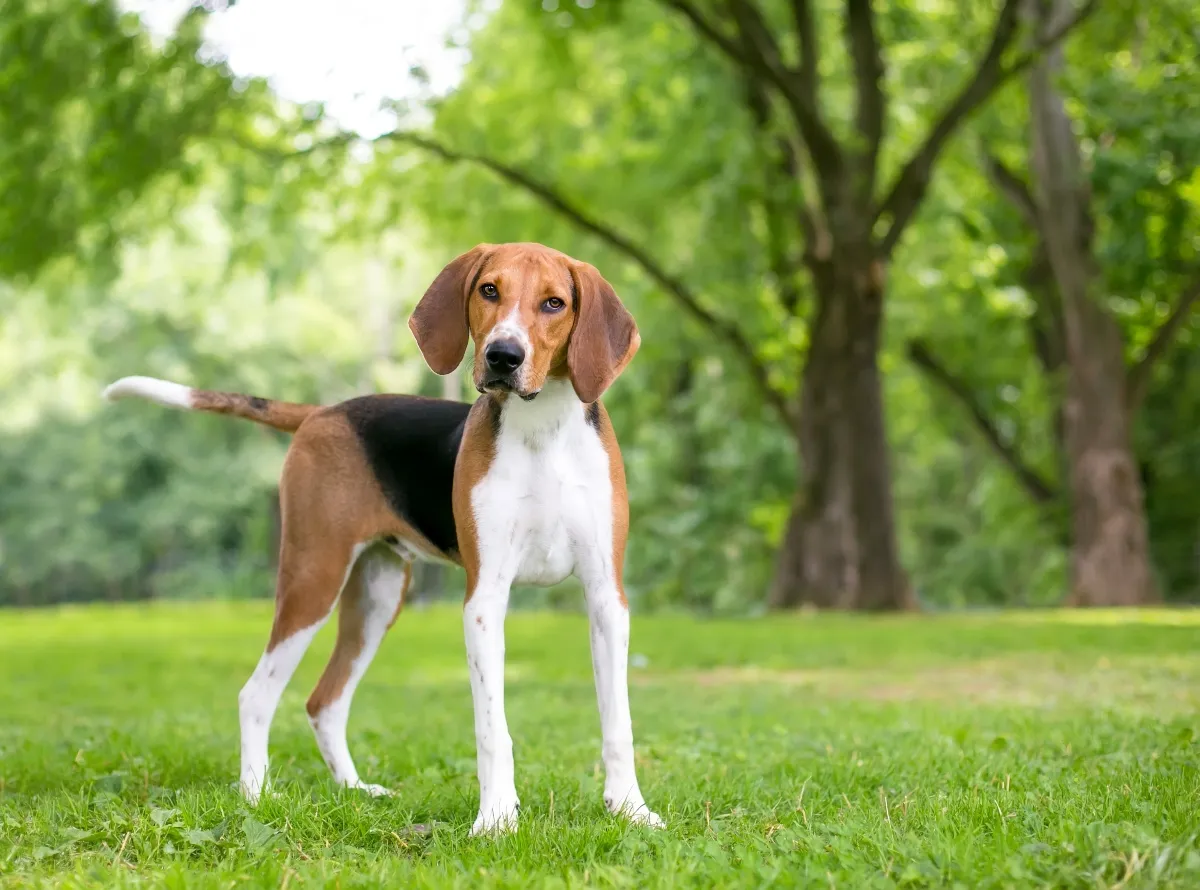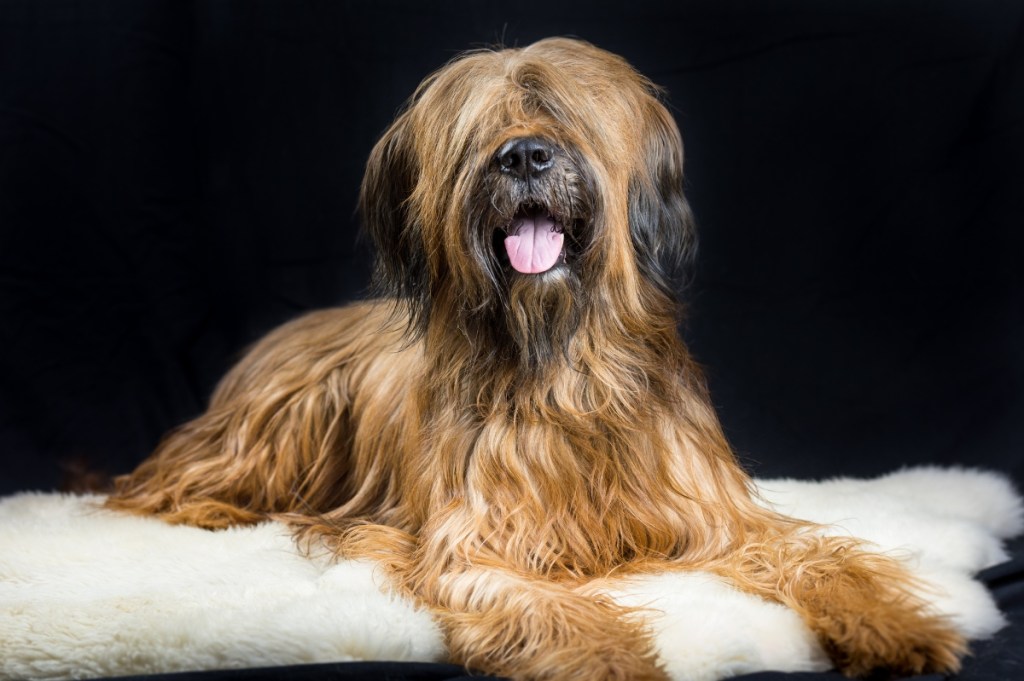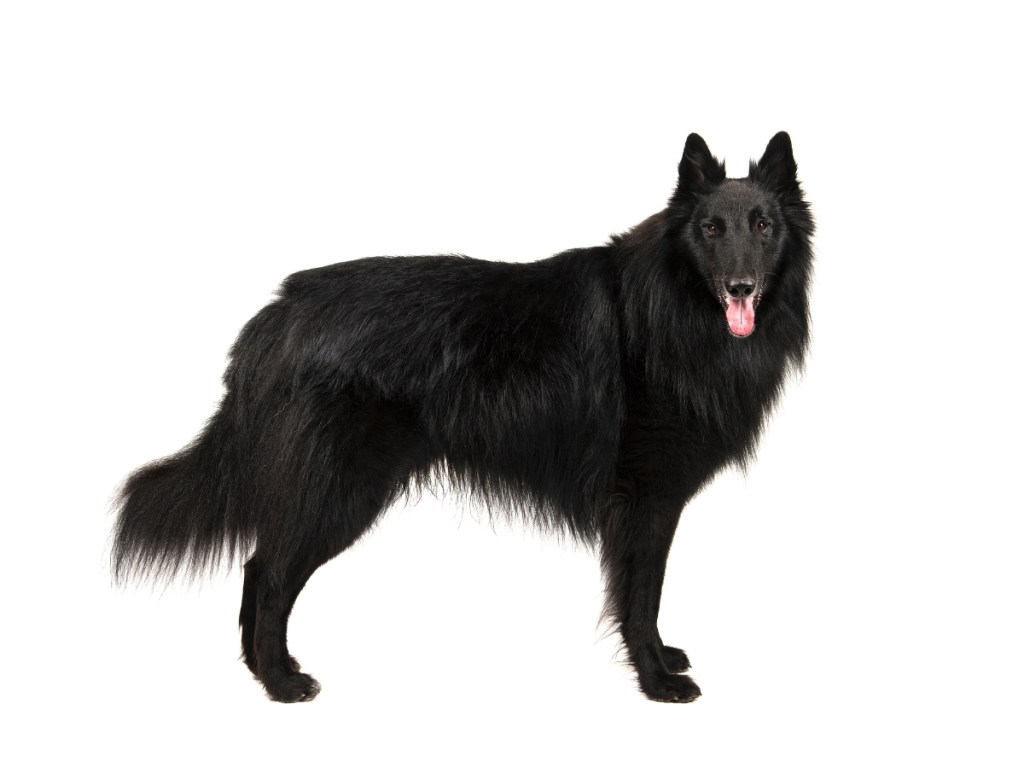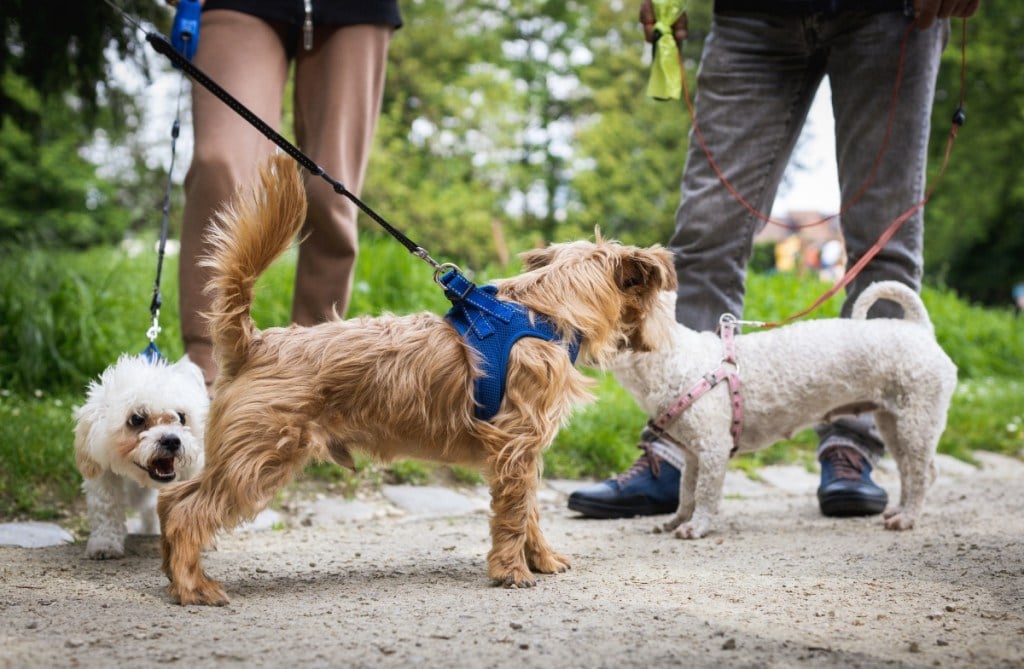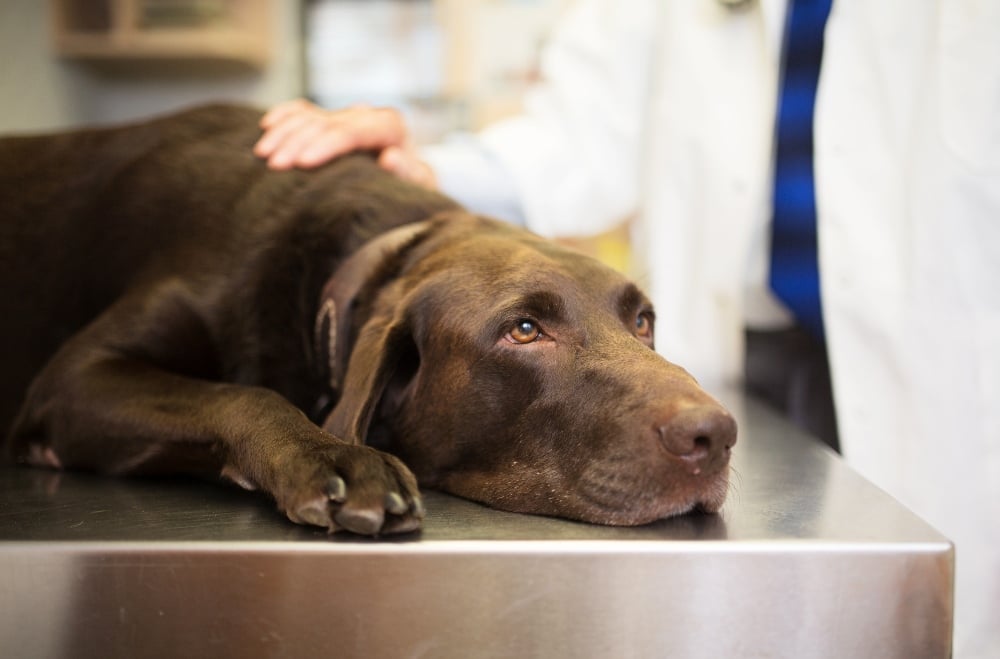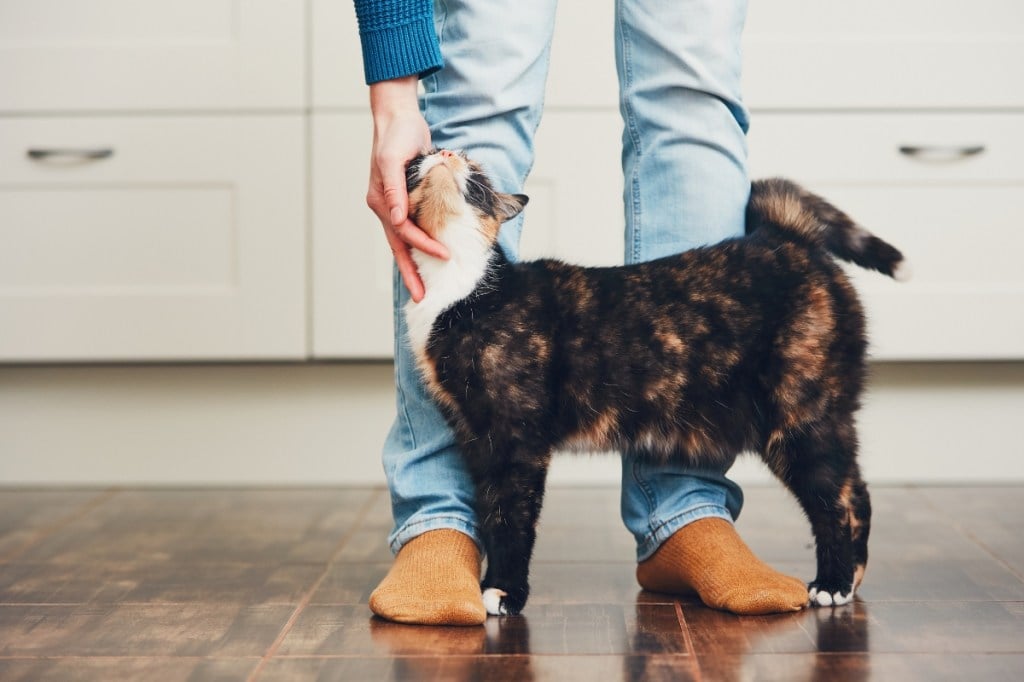The American Foxhound is a sleek, high-spirited dog known for its endurance, sweet temperament, and musical voice. Originally bred in the United States for foxhunting, this scenthound thrives on physical activity and companionship. With their long legs, deep chests, expressive eyes, and easygoing personalities, American Foxhounds bring athletic grace and family-friendly charm to your home.
What sets this breed apart is its boundless stamina and gentle nature. While their baying bark can be loud, their hearts are soft. They’re affectionate, loyal, alert, and usually excellent with kids and other dogs.
At Healthy Paws, we celebrate every dog breed for its unique personality and needs. In this guide to the American Foxhound dog breed, we cover everything from size and characteristics to care, health, and insurance considerations.
Size of American Foxhounds
American Foxhounds are fairly tall and lean. Males typically stand between 22 and 25 inches tall and weigh around 65 to 70 pounds. Females are slightly smaller, measuring 21 to 24 inches and weighing 60 to 65 pounds. These dogs were built for endurance rather than bulk, with long limbs, slim waists, and a trim frame.
They grow quickly during their first year, reaching near full height by 12 months, and continue filling out through their second year.
Here’s how their growth generally progresses:
| Age | Male Foxhounds | Female Foxhounds |
| 3 months | 20–30 lbs. | 15–25 lbs. |
| 6 months | 40–55 lbs. | 35–50 lbs. |
| 9 months | 50–65 lbs. | 45–60 lbs. |
| 12 months | 55–70 lbs. | 50–65 lbs. |
| 24 months | 65–75 lbs. | 60–70 lbs. |
Foxhounds tend to maintain a lean silhouette, and it’s important to keep them fit to protect their joints and fuel their high activity levels.
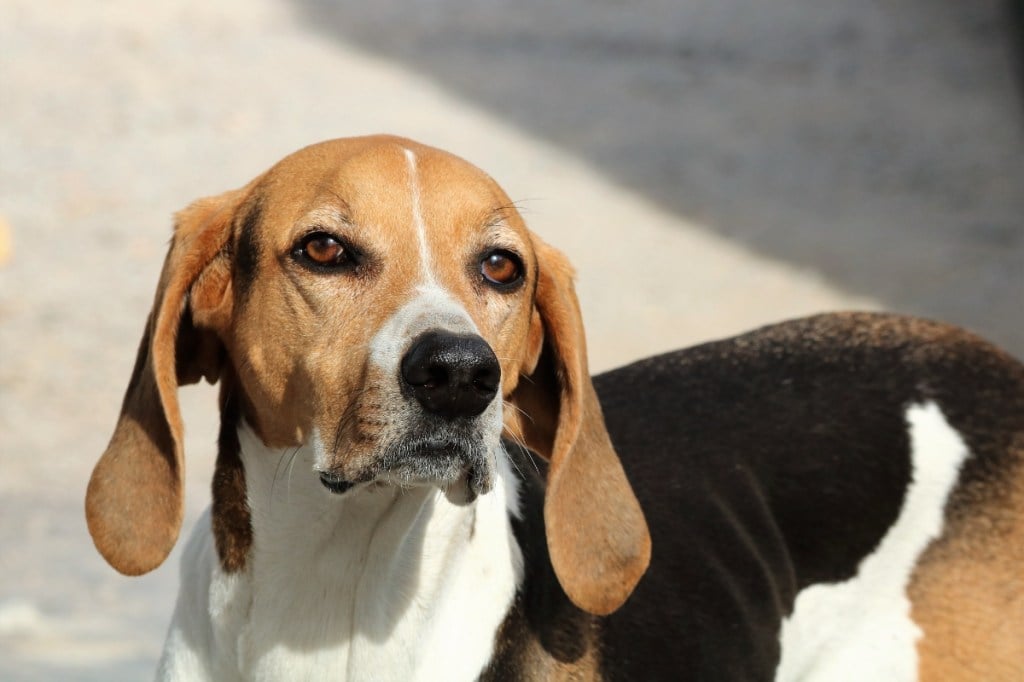
Characteristics of American Foxhounds
Despite their working-dog roots, American Foxhounds are famously friendly. These dogs are pack animals at heart, so they’re happiest around family, including kids, other dogs, and familiar caregivers. They can also be socialized to live with cats, but this may require conscious effort due to their strong prey drive.
The American Foxhound needs a lot of exercise. These dogs were bred to run for hours and need ample daily activity. Without it, they may become vocal, frustrated, or destructive.
Is the American Foxhound a good family dog? In most cases, they’re affectionate and gentle, though their energy level and vocal nature may require patience.
Here’s what to expect from American Foxhound characteristics:
| Breed Characteristic | Level (High, Medium, Low) |
| Affectionate with People | High |
| Good with Kids | High |
| Good with Pets | Medium |
| Need for Exercise | High |
| Energy Level | High |
| Intelligence Level | Medium |
| Able to be Trained | Medium |
| Amount of Barking | High |
| Amount of Shedding | Medium |
History of American Foxhounds
The American Foxhound is one of the oldest dog breeds developed in the United States. Its ancestors were English foxhounds brought to the colonies in the 1600s. Later, French hounds—gifted to George Washington by the Marquis de Lafayette—were added to the mix. Washington is often credited as a founding breeder of the American Foxhound.
The breed was developed for foxhunting on horseback across large tracts of land. They hunted in packs, using scent rather than sight to track prey. By the 1800s, distinct regional strains of foxhound had developed. The breed was officially recognized by the American Kennel Club in 1886.
Today, American Foxhounds are still used for hunting in some parts of the United States, but many also live as cherished family pets.
American Foxhound Standard Information
The breed standard of the American Foxhound describes a dog built for endurance, speed, and agility in the field. This breed is lean, tall, and strongly muscled, combining grace with rugged functionality. Bred to hunt in packs over long distances, the American Foxhound is alert, eager, and determined. Its movement is fluid and ground-covering, reflecting stamina and drive.
Here is an overview of the breed standard information for American Foxhounds:
Head:
- Slightly domed skull with moderate width
- Muzzle is long, straight, and well-balanced with the skull
- Eyes are large, wide-set, and brown or hazel with a gentle, pleading expression
- Ears are long, broad, and set low; hang close to the head
- Stop is moderately defined
- Nose is large and open with well-developed nostrils
- Teeth meet in a scissors bite
Neck, Topline, Body:
- Neck is long, muscular, and clean, slightly arched
- Chest is deep with well-sprung ribs, allowing ample lung capacity
- Back is straight and strong, with a slight rise over the loin
- Body is balanced and proportionate, built for stamina rather than bulk
- Tail is set moderately high, carried gaily with a slight curve
Forequarters:
- Shoulders are sloping and well-laid back
- Forelegs are straight and well-boned
- Elbows are close to the body
- Feet are round and cat-like with well-arched toes and firm pads
Hindquarters:
- Hindquarters are strong and muscular with good angulation
- Thighs are broad and powerful
- Hocks are well let down and parallel when viewed from the rear
- Feet match the front—compact, round, and resilient
Coat:
- Coat is short, dense, and hard to the touch
- Flat-lying with no feathering
- Weather-resistant and easy to maintain
Color:
- All recognized hound colors are acceptable
- Common variations include tri-color, black and tan, red and white, and lemon
- No preference is given to color patterns
Gait:
- Movement is effortless, smooth, and ground-covering
- Displays strength, coordination, and flexibility
- Tracks straight and moves with purpose and efficiency
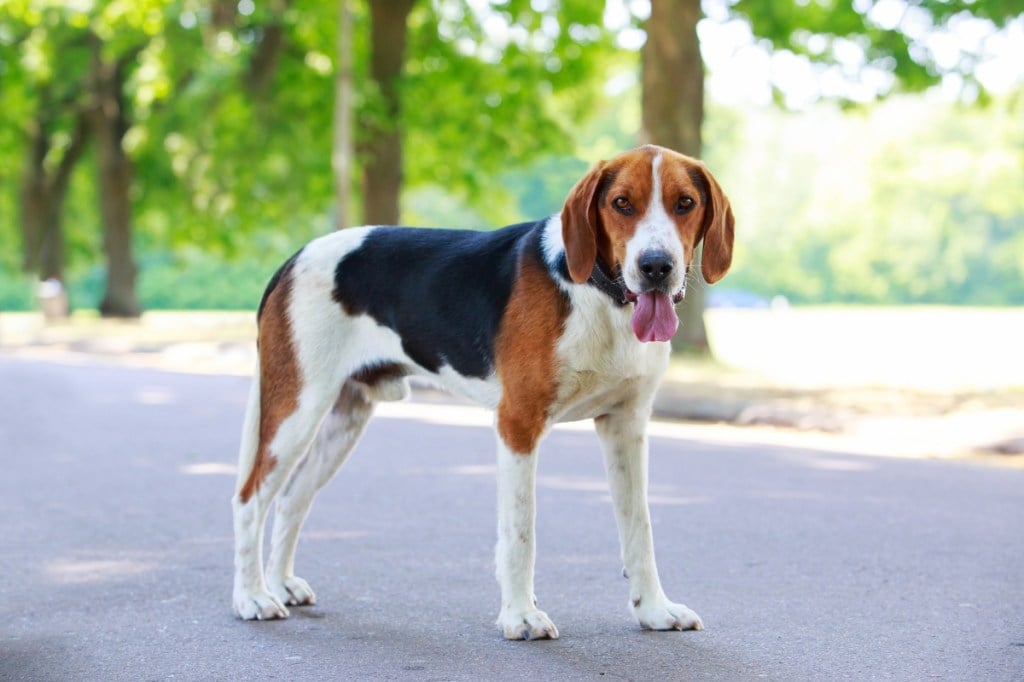
Caring for American Foxhounds
Living with a foxhound means keeping up with their physical and emotional needs. These dogs love to move, sniff, socialize, and stay close to their people.
Best Living Environments:
- Houses with fenced yards
- Not well-suited for apartment life due to their size and vocal nature
- Homes where they can be part of daily activity and not left alone for long
- Environments with other dogs or lots of human interaction
Type of Exercise:
- At least 60 minutes of daily exercise
- Long walks, jogs, or fenced-in playtime
- Opportunities to follow scents or explore new environments
- Can benefit from structured activities like hiking or tracking work
Mental Enrichment:
- Scent work and puzzle toys
- Short training games
- Playdates with other dogs
- Rotating toys and supervised outdoor exploration
Training Strategies:
- Respond well to positive reinforcement
- May be distracted by scents
- Socialization early on
- Short, consistent, and engaging training sessions
- Weekly brushing with a soft-bristle brush
- Occasional baths as needed
- Regular ear cleaning, nail trimming, and dental care
- Quick coat checks after outdoor play to catch ticks or burrs
Want more grooming advice? Read our dog grooming tips.
Common Health Problems of American Foxhounds
The American Foxhound dog breed is generally hardy, but they can experience health concerns, such as:
- Hip dysplasia
- Ear infections caused by long ears trapping moisture
- Obesity due to high food drive plus low activity
- Blood clotting disorders, including Factor VII deficiency and thrombocytopathy
- Bloat (GDV)
- Degenerative myelopathy (a progressive, incurable spinal cord disease)
- Minor injuries, such as scrapes or paw issues from outdoor adventures
Routine veterinary visits and regular preventive care can help your American Foxhound live a long and happy life.
Diet and Nutrition for American Foxhounds
Foxhounds are active dogs with healthy appetites. They do best on a balanced diet that supports their energy levels and maintains lean muscle.
Feeding Guidelines:
- Puppies: Three or four meals per day
- Adults: Two measured meals daily
- Spaced feedings
- Avoid feeding before or after exercise to reduce the risk of bloat
- Use of slow feeders or puzzle bowls for fast eaters
Choose a high-quality dog food that is recommended by your veterinarinan. Monitor your dog’s weight and body condition, adjusting portions as needed. Supplements such as omega-3s or probiotics may be helpful for joint, coat, and digestive health. Talk to your vet before adding anything new.
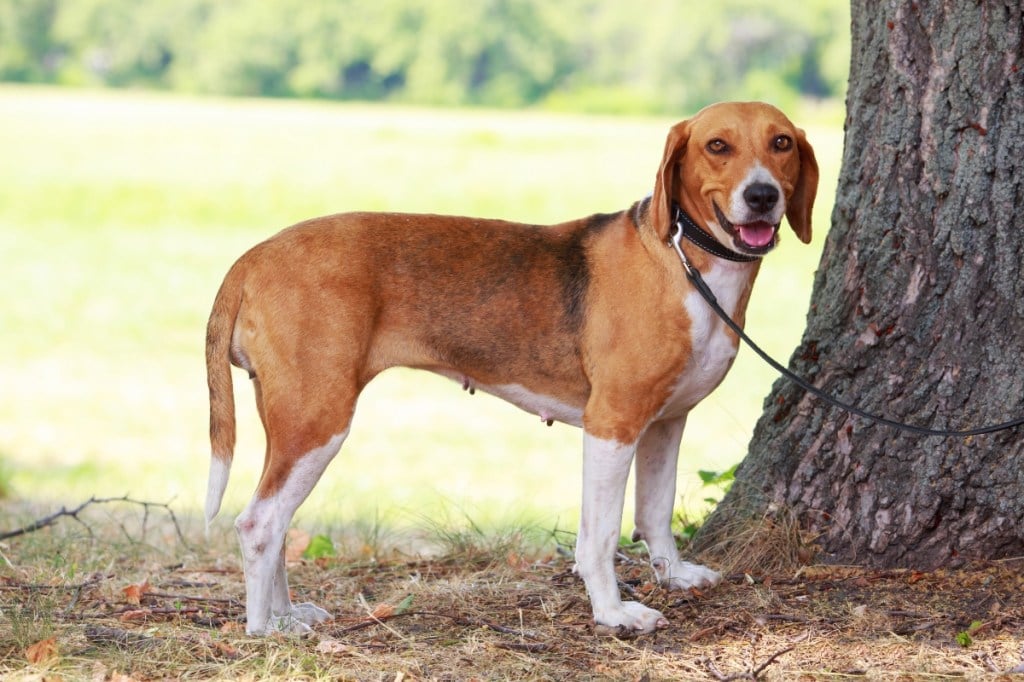
Where to Adopt or Purchase American Foxhounds
Foxhounds may be available through breed-specific rescues or general animal shelters. Some hunting dogs are rehomed after retirement and adapt well to family life.
Where to look:
If buying from a breeder, ask about health screenings and meet the puppy’s parents. A responsible breeder can answer your questions and match you with a puppy that fits your lifestyle.
Related Breeds
If you love the American Foxhound’s energy and personality, you may also want to learn more about:
- English Foxhounds: A stockier cousin with a similar temperament and hunting drive
- Beagles: Smaller but also friendly, curious, and scent-driven
- Treeing Walker Coonhounds: Shares foxhound ancestry with an added treeing instinct and a louder voice
These breeds share traits with the American Foxhound but with their own unique personality and care needs.
Pet Insurance for American Foxhounds
As energetic dogs with an adventurous streak, American Foxhounds benefit from pet insurance to help cover the cost of unexpected accidents or illnesses. Whether it’s a pulled muscle from too much running, a chronic ear infection, or a more serious condition, insurance can give you peace of mind.
Healthy Paws offers plans that cover:
- Accidents and illnesses
- Hereditary and congenital conditions
- Alternative care, such as acupuncture and chiropractic
- Treatment at any licensed vet or emergency animal hospital
We recommend enrolling your American Foxhound while they’re young to maximize coverage. Get a personalized quote today.
